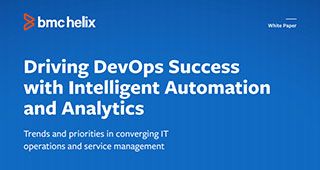There are many reasons an organization may need to migrate an in-house data center (DC) to another location, whether it’s a new physical location or in the cloud. All sorts of scenarios can trigger the data center move:
- Mergers and expansions
- Cloud initiatives
- End of lease situations
- Regulatory requirements
Before you can start moving, though, you need to know what you have. That’s why all DC migrations have one strategic best practice in common:
You need to discover, map, and inventory all your existing data center assets in order to move, replace, or retire them.
Let’s take a look at what goes into your DC inventory, so you can build the best foundation for your DC migration. We’ll also point out common surprises you might find along the way. The earlier in planning you know about them, the less likely they’ll cause problems during the overall migration.
(This article is part of our Data Center Operations Guide. Use the right-hand menu to navigate.)
What’s a data center inventory?
The data center inventory provides all the planning information that you’ll need to successfully plan a data center move to either another physical DC or the cloud.
Your inventory should document two key categories:
- The physical and network infrastructure that powers your company
- The application connections that rely on that infrastructure
The DC inventory underpins your approach and strategy for your migration. It also helps you identify and plan for any risks your organization faces with a DC move.
A DC inventory should be one of the first items you create after the decision to move a data center has been made.
Elements of a data center inventory
A data center inventory provides a road map for what needs to be done to close and relocate a data center. You’ll want to create this list as the first step of your planned migration. Once the migration is confirmed that it’s going to happen, use this checklist to begin your inventory.
You can create a data center inventory in two ways:
- Creating and compiling it manually
- Using discovery software to automate asset discovery and map application dependencies
The following image illustrates the various DC item categories you will need to discover and map while planning a data center move.

Now, let’s take a look at each category in more detail.
Current data center contractual obligations
Review any terms and conditions associated with the data center you are leaving, including termination clauses and penalties. This tells you what obligations you have in leaving an existing data center.
Hardware inventory
The hardware inventory discovers the physical servers and infrastructure equipment you need to move or replace. This equipment should include: all DC network servers, PCs, printers, routers, switches, firewalls, Web filters, Web server farms, load balancing devices, modems, edge or DMZ servers, uninterruptable power supplies (UPSes), power distribution units (PDUs), backup devices, etc.
For each piece of equipment, you’ll need to gather and inventory these details:
- Machine manufacturer, model, and date placed in service or approximate age
- Operating system and version
- IP addresses, ethernet adaptors, subnet masks, default gateways, and DNS servers each piece of hardware uses
- Relevant equipment-specific information, including CPU, memory, storage, database types (i.e., MS SQL Server, Oracle, IBM DB2, etc.)
- Power requirements, including wattage, input/output voltage, amps, types of electrical connectors, and whether the equipment uses single or redundant power supplies
This list may provide surprises, including critical equipment you did not realize you had, or ancient servers that still service critical functions. Be thorough.
Communications inventory
The communications inventory includes all non-tangible network resources and configurations that you’ll need to either move, replace, or retire when migrating the DC.
Items needed here include:
- Internet class A, B, or C networks used in the DC and the organization you obtained them from, and the IP subnets used from these networks
- Internal (non-routable) IP address subnets used in the data center (10.x.x.x, 192.168.x.x, or 172.16.x.x through 172.31.x.x)
- Any Classless interdomain routing (CIDR) blocks or subnet masks for your IP subnets
- IP information gathered from the hardware inventory
- Telecommunications lines (Telco), IP address classes, and subnet masks associated with each Telco line
- Domain names and registrars for domains that are tied to data center IP addresses
- DHCP IP address reservations for specific DC and subnet equipment
- Internal and external DNS entries that reference IP addresses in the data center
- Firewall access control lists (ACLs) containing outside IP addresses and ports that the firewall allows traffic into and out of the data center
- Wide area network (WAN) mapping showing any outside locations that communicate with the existing Data Center through the WAN, along with any mesh network connections the DC uses in case of network failure
- Contract information associated with any leased resource, including the date the contract expires, line speeds (if applicable), and termination procedures
Like the hardware inventory, the communications inventory can contain surprises. Surprises might include:
- Domain IP addresses that are owned by the data center you are moving away from
- Telco lines that have multiple years left on their contracts
- Severe penalties for terminating a contract
- Other unexpected items
Application inventory map
After you have inventoried your hardware and communications inventory, identify all applications running on DC hardware and the physical or logical machines they are running on, as well as any outside servers that communicate with DC hardware or communication resources. This includes:
- Core network applications such as domain controllers and file and print servers
- Support services, such as:
- Windows Server Update Services (WSUS) servers that provide Windows patches to client devices,
- Third-party servers that update client software such as anti-virus and malware management consoles, email servers, database servers, Web servers, FTP servers, time-clock servers, backup servers
- Remote access servers that reside on data center servers
- Production applications that run your business such as ERP software, business intelligence, big data servers, data warehouses, and CRM software residing on DC servers
- Servers or applications in other organization-owned data centers that communicate with the applications in the DC being moved
- PC applications that communicate with applications in the data center
- Customers and business partners who access your network or applications through firewalls in your Data Center, for applications such as EDI, FTP exchange, and remote access to vendor-owned equipment
- External Web sites that exchange data with DC servers
- Email providers and email filtering services
- IP addresses or DNS entries each of the above entities use to contact applications on your network
The application inventory provides a map of how interconnected your data center is, both inside and outside your organization. It shows you all the connections that need to be accounted for when you move.
SLA requirements
Review and inventory all customer Service Level Agreements (SLAs) that are currently in place and are related to Data Center performance. SLAs will include items such as:
- Network reliability
- Availability
- Support
Any SLAs that were required for the old DC will probably need to be enacted and enforced for the new data center.
BMC supports data centers
BMC Helix Discovery is a cloud-native discovery and dependency mapping solution. It gives you the exact visibility into hardware, software, and service dependencies you need for any data center move. Have assets across the multi-cloud? BMC Helix Discovery can handle those, too.
BMC Helix Discovery can help your company improve:
- Service awareness and delivery
- Security
- Cost transparency
- Digital transformation
Plus, a recent report indicates that the average organization deploying BMC Helix Discovery sees a payback period of only five months.







